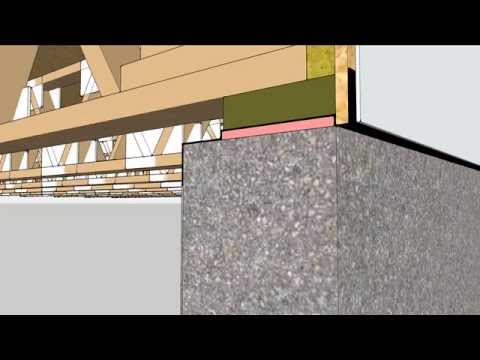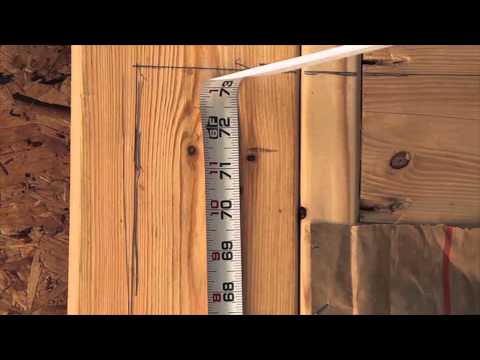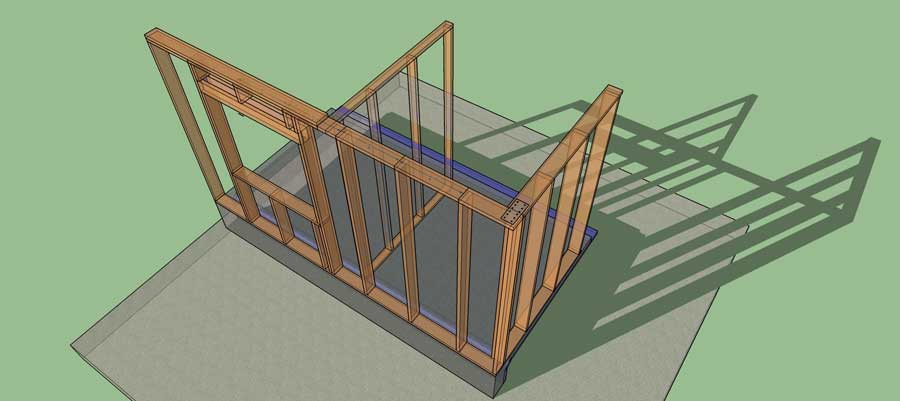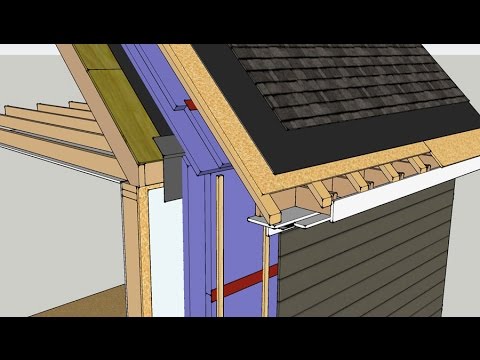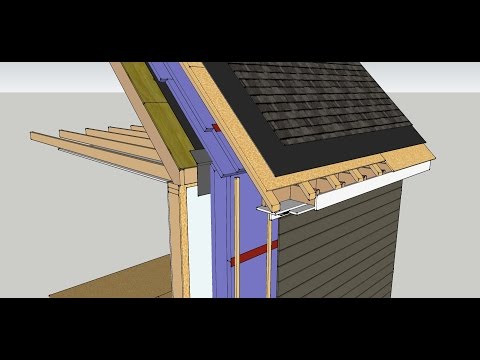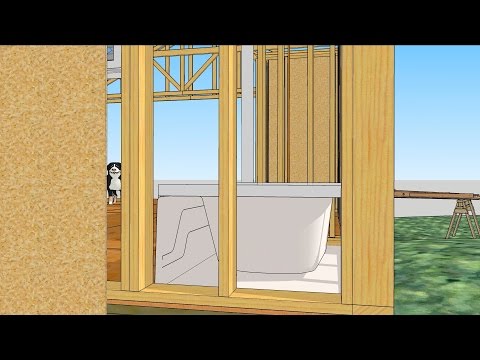Think LAYERS
A tight air barrier is the best way to build an energy-efficient house. The best place for an air barrier? The rigid outer shell. With multiple layers of exterior coverings, you have a lot of chances to make it better.
These details illustrate that an air barrier is made up of a lot of products and materials working together in a 3-dimensional assembly to keep the outside-out and the inside-in.
Do's and don'ts for tightening wall assemblies
- Don't leave big gaps between sheets of plywood. Tape the seams if possible.
- Do make housewrap part of the air barrier system. Tape the seams, integrate the housewrap with window and door flashing. Some people go the extra step of sealing the top and sides of the housewrap to the sheathing with caulk.
- Don't seal the bottom of the housewrap to the sheathing — let it drain.
- Do seal joints in framing with adhesive, caulks, gaskets, or canned foam.
- Do seal holes through walls. Implement the "You cut, you seal" rule: If you cut a hole on the envelope, you are responsible for sealing it.
- Do use drywall as part of the an air barrier system, with caulks, sealants, gaskets, and foams.
- Don't forget about the big holes, like the sheathing behind a tub/shower unit. Because these units are often installed by plumbers during rough framing, no air sealing it executed.
<code>
- 2009 IECC: Table 402.4.2 Air Barrier and Insulation Inspection Component Criteria
- 2012 IECC: Table R402.4.1.1 Air Barrier and Insulation Installation
</code>
Sources:
- Energy Star
- Building America
- Our technical committee
The video on this page was updated Oct 14 2016, adding a voiceover, improved 3D modeling, and a Tuba soundtrack.
